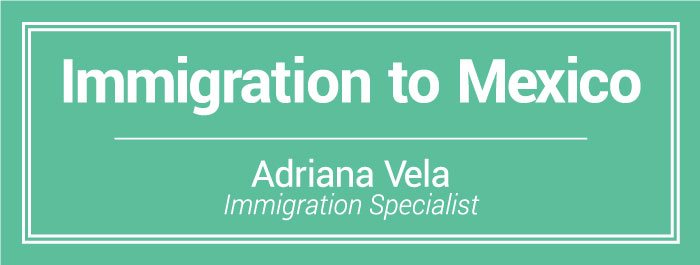There have been many reports recently of changes to the standard Mexican 180-day allowance for tourists. Let’s take a closer look.
Entering Mexico as a Tourist
When entering Mexico as a tourist, you submit an FMM (Forma Migratoria Multiple) with details about your visit. An immigration official at your point of entry will indicate how many days your stay can last. By law, the maximum any visitor can stay is 180 days. However, the immigration officer has full discretion and may only allow you a shorter stay. In the past, most people were granted 180 days regardless of their actual plans. Recently, however, more and more visitors have been granted shorter stays. That is to say that six full months is no longer standard. We have had several reports of this in our Facebook group.
Types of Visitor
There are generally three types of visitors to Mexico. One is the regular tourist coming for a couple of weeks on holiday. They stay at one of Mexico’s many tourist destinations, such as the Riviera Maya, enjoy what is on offer, and leave shortly after. The next type is regular longer-term visitors, often known as ‘snowbirds’. They usually leave their colder countries such as Canada in winter and take full advantage of Mexico’s six-month tourist visa, every year. The other type is travellers or back-packers who enter the country with no real plan. However, they too, until now, have enjoyed the freedom of a 180-day allowance to explore the country, if they want.
Recent Changes to the 180-Day Norm
In 2020 when covid struck, things began to change. Remote working became the norm. Many people started viewing Mexico as a remote work destination. The 180-day visitor allowance enabled this. Mexico is also an increasingly attractive destination for digital nomads, i.e. fully location-independent laptop workers. Their numbers have increased worldwide as many lost their jobs during covid. Others just saw another way of life was possible.
Now we are hearing numerous reports of tourist permits shorter than six months being issued. Immigration officials are also asking for more proof of accommodation, plans when visiting Mexico, and exit travel plans. Stays of 40 days rather than 180 days are more usual. Snowbirds and remote workers/digital nomads will be the most affected by this.
Why Are These Changes Occurring?
Well, if you want to stay in Mexico long-term there are official options available: temporary and permanent residency. These procedures allow you to stay in Mexico for more than six months, and grant you other benefits such as local discounts, and ability to get a work permit. For years, because of the flexibility of the 180-day visitor permit, people have been avoiding these other procedures. They have simply left the country after six months and re-entered in order to initiate another 180-day stay. If visitors are actually working in Mexico rather than visiting for tourist purposes, there could be legal/tax implications. The procedures to gain residency do have requirements such as financial solvency or family links. However, they are straightforward and relatively easy to acquire compared to many countries.
In a Nutshell
If you are simply visiting Mexico and do not intend to stay 180 days, or work here, then let immigration know upon arrival. They will grant you a stay according to the information you provide. However, they have full discretion and may allow you less time. Therefore, it is advisable to have accommodation and an exit ticket ready to corroborate your plans.
If you intend to return to Mexico regularly or for extended stays, you should apply for residency. Retirees can often apply for permanent residency immediately without needing temporary residency first.
If you intend to stay in Mexico to work remotely, or for more than 180 days you should apply for residency. Temporary residency is initially granted for one year, and can be renewed for up to four years total.
If you enter Mexico as a tourist and would like to stay longer, you can apply for residency in-country.
Check out our other articles for further information on temporary and permanent residency.
For a personal consultation on residency, email Adriana Vela at info@immigrationtomexico.mx.

